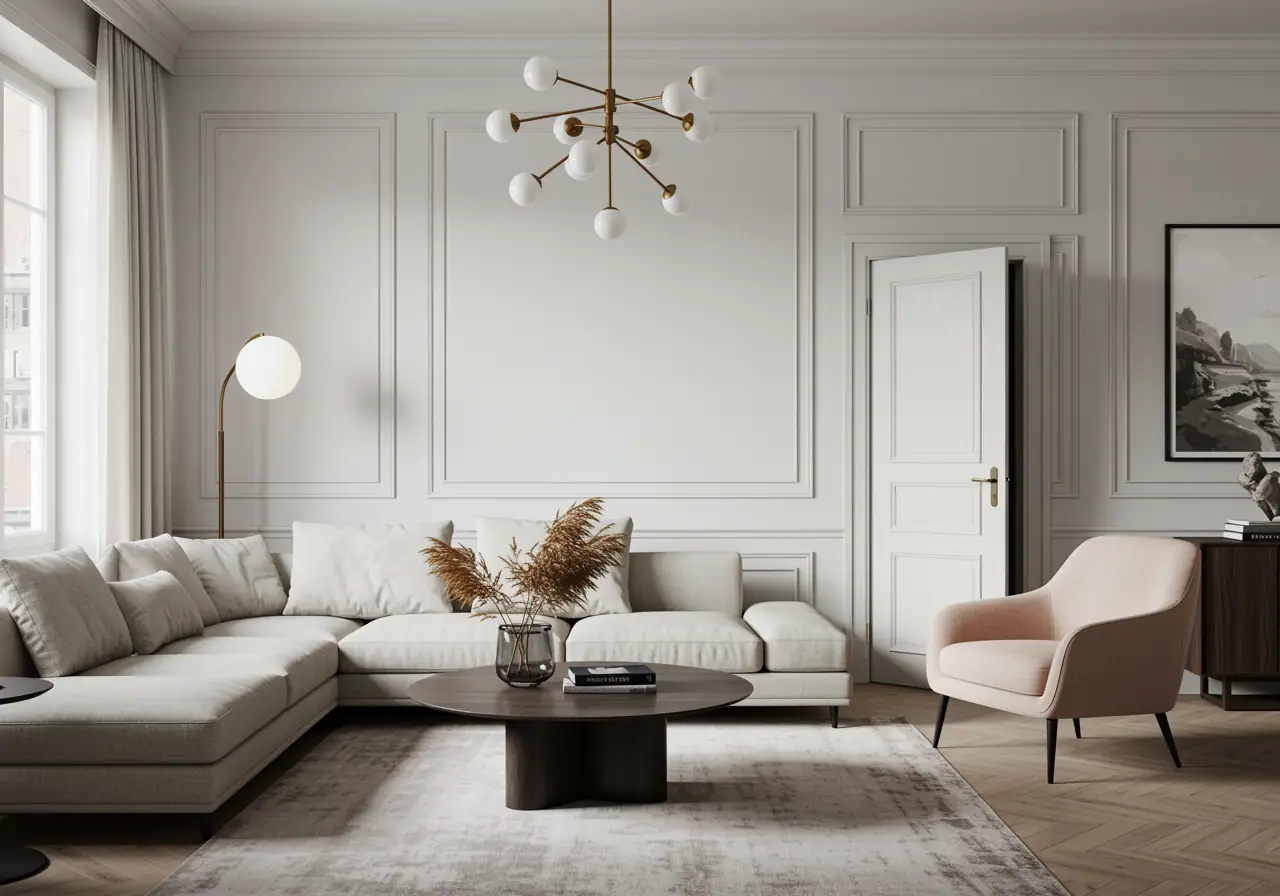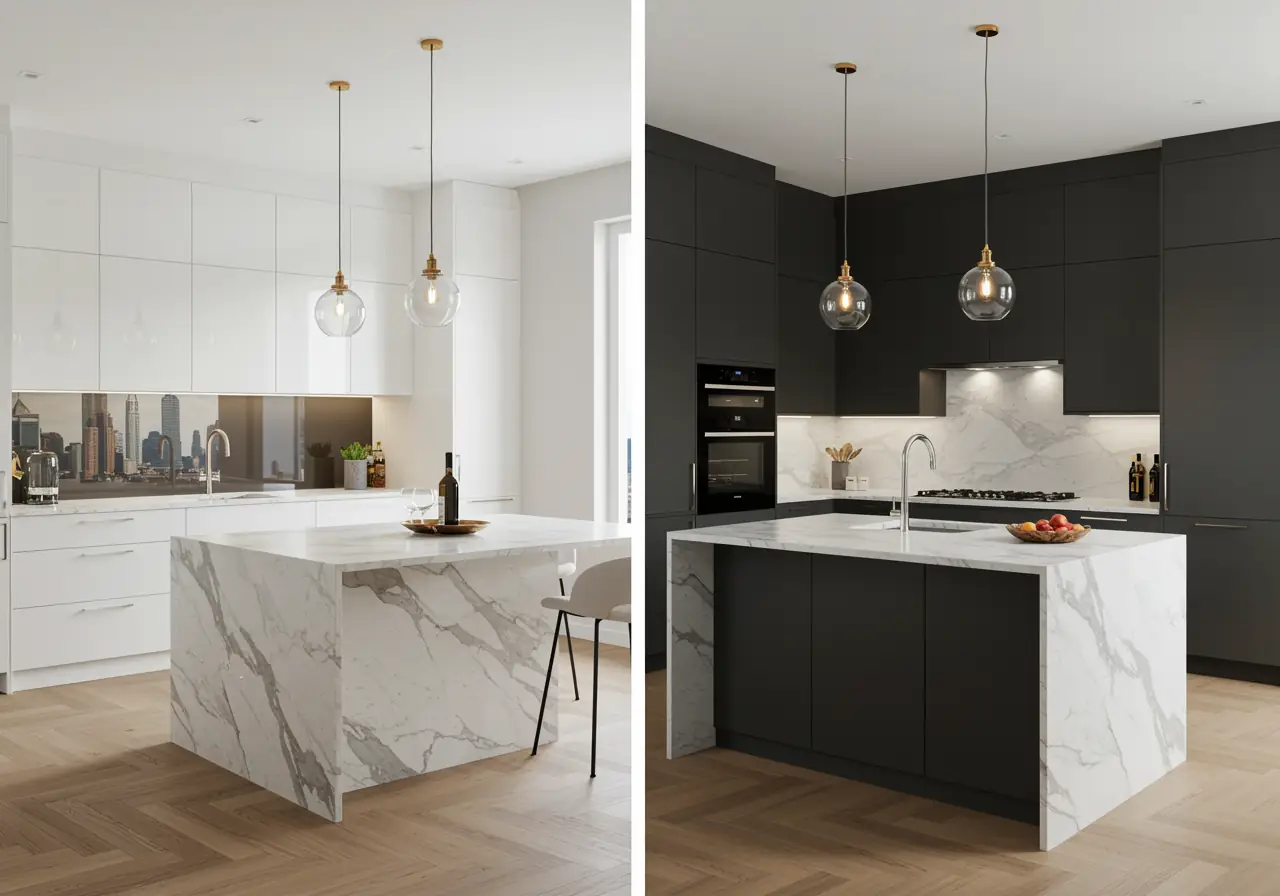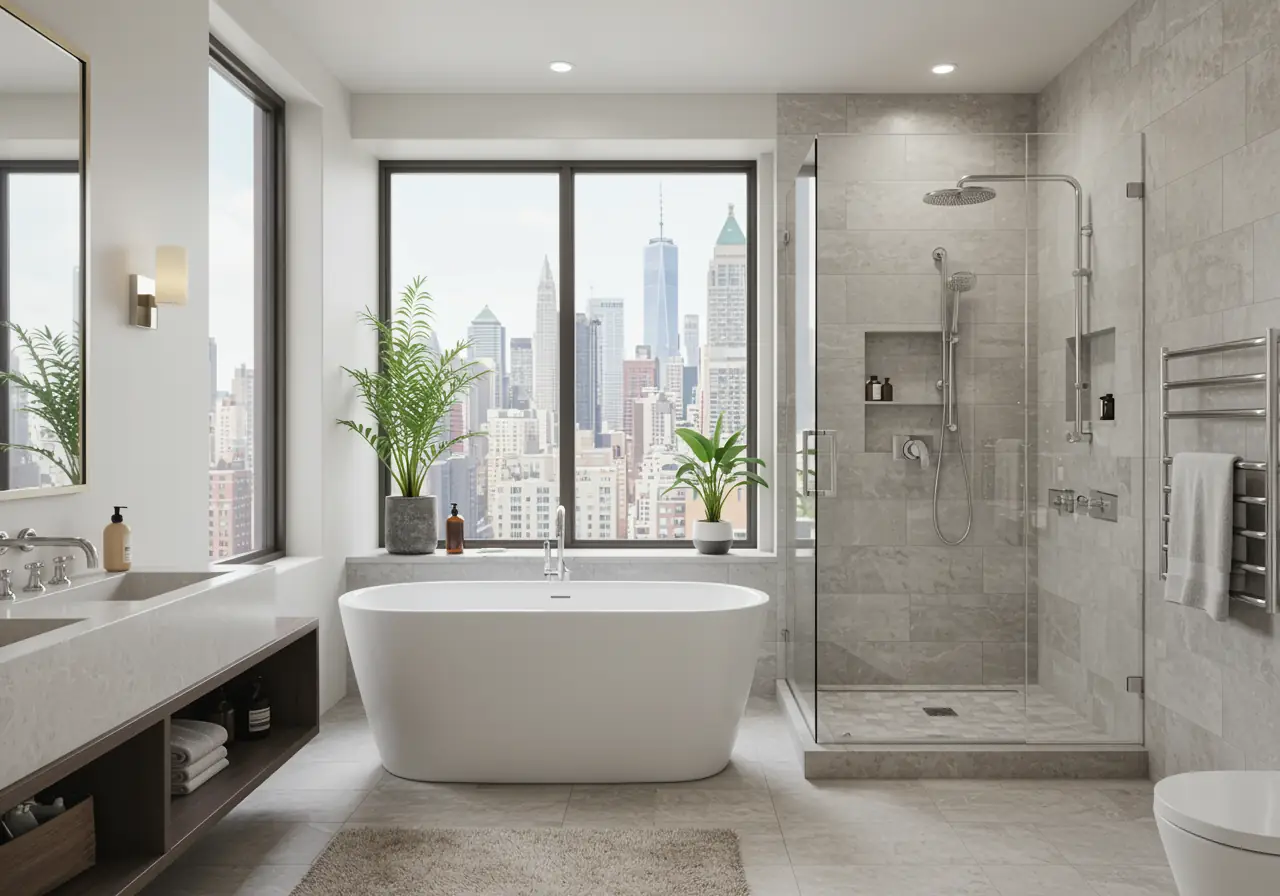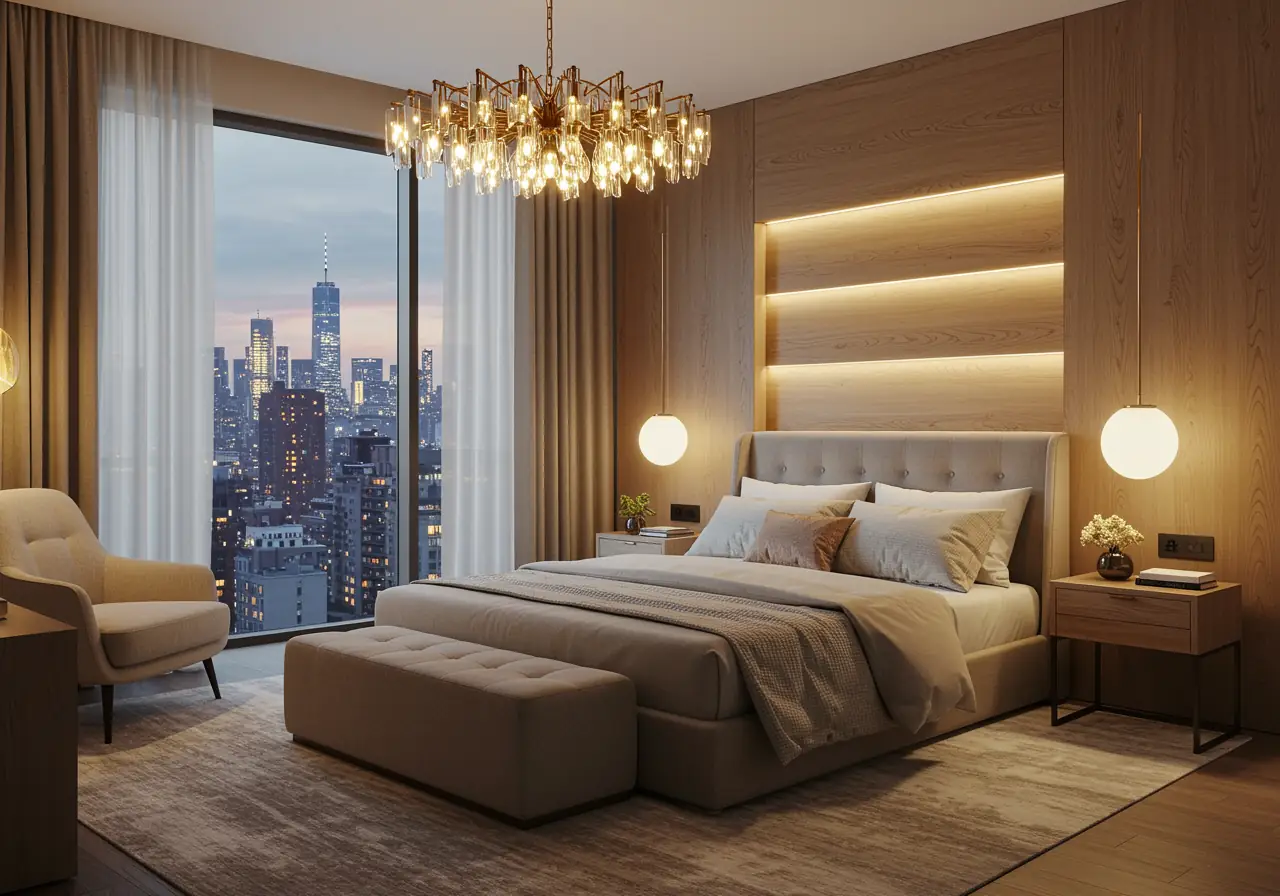Minimalism vs Maximalism: Luxury Interior Design Trends & Psychology for 2025
In this guide, we dive into minimalist vs maximalist interior design, two opposing yet equally powerful trends shaping luxury home interiors in 2025. Minimalism captivates with calm, clutter-free spaces that boost mental clarity, while maximalism energizes through layers, bold colors, and expressive details.
These styles go beyond aesthetics - each deeply impacts your psychological wellbeing, offering either soothing order or vibrant stimulation. After a decade ruled by minimalism, we're seeing a revival of maximalist influences inspired by classic art movements. Even more intriguing is the rise of minimalist maximalism, blending clean lines with striking statements to create sophisticated, balanced interiors. Discover how this fusion defines the future of luxury living.

What does minimalist and maximalist mean in design?
The distinction between minimalist and maximalist design approaches goes beyond mere aesthetics - it represents fundamental differences in how we interact with our living spaces.
Minimalism: simplicity, function, and space

At its core, minimalist home design isn't about living with as little as possible. Instead, it focuses on eliminating the unnecessary to highlight what truly matters. This design philosophy discourages excessive consumption and promotes living with only what you need. Minimalist interiors feature clean lines, uncluttered spaces, and a monochromatic or neutral color palette that typically includes whites, creams, beiges, grays, and blacks.
Functionality stands as a cornerstone of minimalist interior design. Every item must serve a clear purpose - ideally multiple purposes - creating spaces that feel intentional rather than sparse. As one designer explains, "It's not asking, 'How little can I live with?' but rather, 'What can I get rid of that I don't need?'" This "less is more" approach is central to creating a minimal aesthetic.
Maximalism: expression, abundance, and personality

Conversely, maximalist home design embraces the "more is more" mentality. This style celebrates excess through bold colors, layered patterns, and an abundance of decorative art. Maximalism encourages self-expression by combining eclectic mixes of patterns, colors, and objects that tell a personal story.
Unlike minimalism's restrained palette, maximalist living rooms often feature vibrant colors and eye-catching combinations. The style incorporates rich textures like velvet, silk, and plush fabrics, furthermore creating visual depth through layering. According to interior designers, "Maximalist design is a style rooted in a more-is-more philosophy that will often blend an eclectic mix of patterns, colors, textures, and objects."
How these styles reflect lifestyle choices
These design approaches extend beyond aesthetics into lifestyle philosophies. Minimalist space aligns with those seeking mental clarity, simplicity, and functionality. The uncluttered environments promote focus and tranquility, consequently reducing visual distractions. Elements of feng shui and Asian Zen often influence minimalist home interiors, creating a sense of balance and harmony.
On the other hand, maximalist home design connects with individuals who value self-expression, creativity, and emotional stimulation. Additionally, these spaces celebrate personal history through collections and meaningful objects. The maximalist room often draws inspiration from various design styles, including art deco and classical interiors, to create a rich, layered environment.
Your preference between these styles often reveals deeper values. Do you find peace in open spaces and muted tones, or do you feel more comfortable surrounded by curated objects that hold personal significance? The answer reflects not just design taste, but your approach to life itself.
Ready to explore which style best suits your personal taste? Contact KS Renovation Group today for a free consultation on your next high-end Manhattan renovation project.

The psychology behind minimalist vs maximalist design
Our living spaces affect us far more deeply than we realize. The design choices we make can significantly impact our mental state, emotional wellbeing, and even our productivity.
Minimalist design and mental clarity

Research consistently shows that minimalist environments can reduce stress and anxiety. Studies indicate that cluttered spaces increase cortisol levels, whereas minimalist designs promote mental clarity. This occurs because minimalism decreases cognitive load - the amount of information our brains must process at once. With fewer visual distractions, our minds can focus more effectively on important tasks.
Moreover, minimalist spaces help conserve mental energy. When surrounded by fewer possessions, we make fewer decisions, thereby reducing decision fatigue. Indeed, some researchers estimate we spend approximately two hours each day simply managing our possessions. Through eliminating excess, minimalists report feeling more mentally organized and better able to concentrate.
Maximalist design and emotional stimulation

In contrast, maximalist environments tap into our innate love for novelty and stimulation. These richly decorated spaces can create memorable experiences that spark curiosity and invite exploration. The vibrant colors, intricate patterns, and abundance of textures in maximalist interiors often evoke joy, excitement, and even nostalgia.
For many, creating a maximalist home serves as a form of self-expression - an immersive space where they can escape the constraints of a minimalist world. These personalized environments can significantly impact overall happiness, as research demonstrates that how we design our homes has an inextricable link to our wellbeing.
How personality types align with each style
Personality assessment tools like the Myers-Briggs Type Indicator reveal fascinating correlations between personality and design preferences. Logical, practical personalities (ISTJs and INTJs) typically prefer minimalist, neutral-colored environments that promote order and efficiency. These individuals value simplicity and functionality above all else.
Alternatively, creative, expressive personalities (ENFPs and ENTPs) often gravitate toward maximalist home design. Their eclectic spaces reflect their love for diversity, stimulation, and creative expression.
Notably, both styles offer genuine psychological benefits - minimalism provides calm and clarity, whereas maximalism delivers warmth and stimulation. The ideal choice ultimately depends on your unique personality and lifestyle needs.

Wondering which style might best support your psychological well being? Contact KS Renovation Group today for a free consultation on your next high-end Manhattan renovation project.
Visual elements that define luxury in 2025
Luxury interior design in 2025 is defined by distinctive visual elements that either embrace simplicity or celebrate abundance—sometimes creating an intriguing fusion of both approaches.
Color palettes: muted vs bold
The color story of 2025 luxury interiors reveals a fascinating divide. Minimalist spaces continue to favor neutral tones - whites, grays, beiges, and earthy tones—creating serene, grounded environments. Nevertheless, there's been a noticeable shift away from all-white minimalist interior, which designers now consider outdated.
In stark contrast, maximalist palettes embrace vibrant hues, with jewel tones dominating luxury spaces. Deep blues, emerald greens, and golden accents frequently appear together in maximalist rooms. Wine emerges as 2025's definitive luxury hue, bridging the gap between rich jewel tones and natural neutrals while lending depth and warmth to spaces. Yellow, a 2024 favorite, now pairs beautifully with cerulean blue, evoking Monet's kitchen at Giverny.

Textures and materials in high-end homes
Texture has become paramount in luxury design, with contrasting elements creating visual interest:
- Natural stone (marble, granite, onyx)
- Handcrafted wood with visible grain
- Plush fabrics (velvet replacing boucle)
- Reflective surfaces (high-gloss, mirrors)
Velvet specifically has emerged as 2025's signature luxury texture, appearing in upholstery, wall treatments, and decorative elements. The revival of "brown furniture" - English and American antiques - adds historical depth to contemporary spaces, while brass finishes offer warm, luxurious accents to fixtures and decor.
Furniture and layout: open vs layered
Minimalist rooms feature sleek, clean-lined furniture with straightforward functionality. Essentially, these pieces serve their purpose without drawing attention. Maximalist living rooms, meanwhile, showcase statement pieces - velvet chairs, ornate sofas, and sculptural tables—that demand notice.
Curved architecture and soft lines are replacing sharp angles in luxury homes, with fluid, organic forms appearing in doorways, furniture, and walls. Multi-purpose furniture has gained prominence, with rooms serving various purposes based on changing needs.
Lighting and decor choices
Lighting functions as "jewelry" for luxury interiors. Statement fixtures include sculptural chandeliers, oversized pendants, and artistic sconces that serve as focal points. Specifically, monopoint lighting, stained glass elements, and soft materials like paper globes are trending.
Examples from Manhattan luxury homes
Tribeca's 45 Park Place exemplifies European sophistication with Italian designer Piero Lissoni overseeing interiors featuring linear minimalism and soaring windows. Central Park Tower on West 57th Street (Billionaire's Row) stands as the world's tallest residential building, while the Upper East Side's Beckford House and Tower complement the neighborhood's prewar architecture with limestone, brownstone, and custom-gray brick facades.
Ready to incorporate these luxury design elements into your Manhattan home? Contact KS Renovation Group today for a free consultation on your next high-end renovation project.
The rise of minimalist maximalism: a new luxury hybrid
A design revolution is brewing in 2025, neither strictly minimalist nor boldly maximalist. This emerging aesthetic creates a delicate balance between opposing design philosophies that many previously thought incompatible.

What is minimalist maximalism?
Minimalist maximalism may sound like a design oxymoron, yet it perfectly captures this innovative fusion style. Unlike traditional approaches, this hybrid combines minimalism's clean simplicity with maximalism's expressive elements. At its core, minimalist maximalism is about thoughtful contrast—not color versus color, but form versus restraint.
This balanced approach allows for bold statements without overwhelming spaces. Primarily, it features:
- Clean lines and functionality from minimalism
- Expressive shapes and patterns from maximalism
- Sculptural shapes and oversized silhouettes in muted palettes
- High-impact pieces that stand out in otherwise calm environments
As one designer explains, "It's taking chaos and giving it order".
How designers blend both styles
Designers achieve this fusion through strategic choices. First, they often establish neutral backgrounds as blank canvases for statement pieces to shine against. Simultaneously, they incorporate sculptural furniture with clean lines coupled with rich textures.
The 60-30-10 rule guides many hybrid spaces: 60% primary color (typically neutral), 30% secondary color, and 10% accent color to highlight the environment. This balanced formula creates cohesive yet visually engaging compositions.

Real-world examples of hybrid interiors
In Manhattan luxury homes, this approach manifests as bold centerpiece furniture against monochromatic backgrounds. For instance, a sculptural velvet chair becomes a room's focal point while maintaining an overall sense of calm. Interestingly, bespoke art plays a crucial role - carefully selected and strategically placed works transform otherwise simple rooms into visually dynamic spaces.
Why this trend is growing in 2025
This style's popularity continues growing as homeowners seek both calm and character in their spaces. Although minimalism promotes mental clarity and maximalism stimulates creativity, minimalist maximalism offers both benefits without compromises. Even more compelling, it provides flexibility—working in various spaces regardless of size or budget.
Conclusion
The tension between minimalism and maximalism goes far beyond looks - these styles shape how you truly live and feel in your space. Minimalist interior design brings calm, clarity, and focus with clean lines and uncluttered rooms. Maximalist design, on the other hand, delivers rich textures, bold colors, and personal stories that fuel creativity and emotion. In 2025, the rise of minimalist maximalism bridges these opposites, blending visual restraint with expressive touches to craft sophisticated, balanced interiors. Whether you crave open, serene spaces, vibrant layers, or a hybrid that offers both mental clarity and character, these luxury design trends provide real psychological benefits. As high-end interiors evolve, expect even more personalized mixes of minimalism and maximalism, tailored to your lifestyle and personality. Understanding these styles empowers you to create a home that truly supports your wellbeing in 2025 and beyond.
Ready to discover which approach best suits your personality and lifestyle? Contact KS Renovation Group for a free consultation, and get a free quote on your next high-end renovation project.
Key Takeaways
Understanding the psychology behind minimalist and maximalist design helps you create spaces that truly support your mental wellbeing and lifestyle preferences.
• Minimalist design reduces stress and cognitive load through clean lines and neutral palettes, promoting mental clarity and focus
• Maximalist design stimulates creativity and self-expression using bold colors, rich textures, and layered decorative elements
• Minimalist maximalism emerges as 2025's luxury trend, blending calm backgrounds with strategic statement pieces for balanced sophistication
• Your personality type strongly influences design preferences—logical types favor minimalism while creative types gravitate toward maximalism
• Wine, velvet textures, and curved architecture define 2025's luxury aesthetic across both design philosophies
The unexpected truth is that you don't have to choose sides. The rise of minimalist maximalism proves that thoughtful contrast - combining minimalism's restraint with maximalism's expression - creates the most psychologically satisfying and visually compelling luxury interiors of 2025.
FAQs
Q1. Is minimalism still relevant in 2025 interior design? While minimalism remains popular, it has evolved beyond stark white spaces. In 2025, soft minimalism is trending, incorporating warmth and texture while maintaining a sense of calm and simplicity.
Q2. What characterizes maximalist design trends in 2025? Maximalism in 2025 embraces bold patterns, layered textures, and rich color combinations. It's a modern take on traditional maximalist elements, featuring statement pieces, vibrant hues, and an abundance of decorative elements that tell a personal story.
Q3. How does Gen Z approach interior design? Gen Z tends to lean towards maximalism as a way to express individuality and reject the minimalist aesthetic associated with previous generations. They embrace bold colors, eclectic mixes, and personalized spaces that reflect their unique personalities.
Q4. What is minimalist maximalism in interior design? Minimalist maximalism is a hybrid approach that combines the clean lines and functionality of minimalism with the expressive elements of maximalism. It features neutral backgrounds with strategic statement pieces, creating sophisticated spaces that are both calming and characterful.
Q5. How do minimalist and maximalist designs affect mental well-being? Minimalist designs tend to reduce stress and promote mental clarity by decreasing visual clutter and cognitive load. Maximalist designs, on the other hand, stimulate creativity and evoke joy through rich textures and vibrant colors. The choice between the two often depends on individual personality and lifestyle needs.

KS Renovation Blog
Get Inspired
Meaningful information about home remodeling for the true NYC homeowners.
OUr Clients Say
NYC kitchen remodeling Projects and more












